Abstract
In 3646 children with at least one confirmed urinary tract infection the prevalence of vesicoureteric reflux at presentation was correlated with progressive renal damage during follow up of not less than two and up to 16 years. Reflux was not demonstrated either at presentation or at any subsequent time in almost one half of the children who suffered progressive renal damage and was not a risk factor for progressive renal damage in boys under 1 year. It was an important risk factor in boys over 1 year and in girls of any age. The risk of progressive renal damage in children in whom micturating cystourethrography (MCU) did not reveal vesicoureteric reflux was substantially greater than in those who indirect isotope voiding study (IVS) did not show reflux. The risk of deterioration for those in whom reflux was demonstrated was similar for both techniques. This discrepancy indicates an appreciably higher false negative rate for the MCU than the IVS. Dilatation of the renal pelvis detected by ultrasound was associated with a significantly increased risk of progressive damage only when associated with reflux, but most children with progressive damage did not have a dilated collecting system at presentation.
Full text
PDF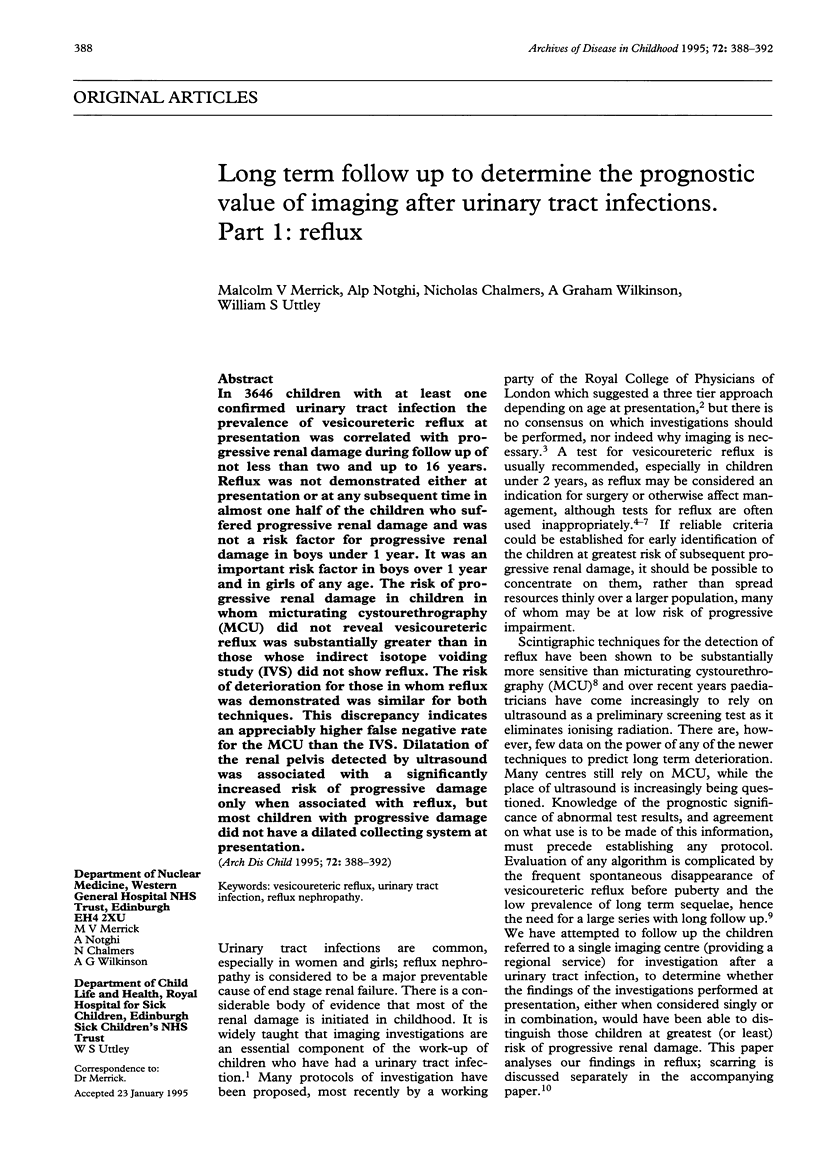
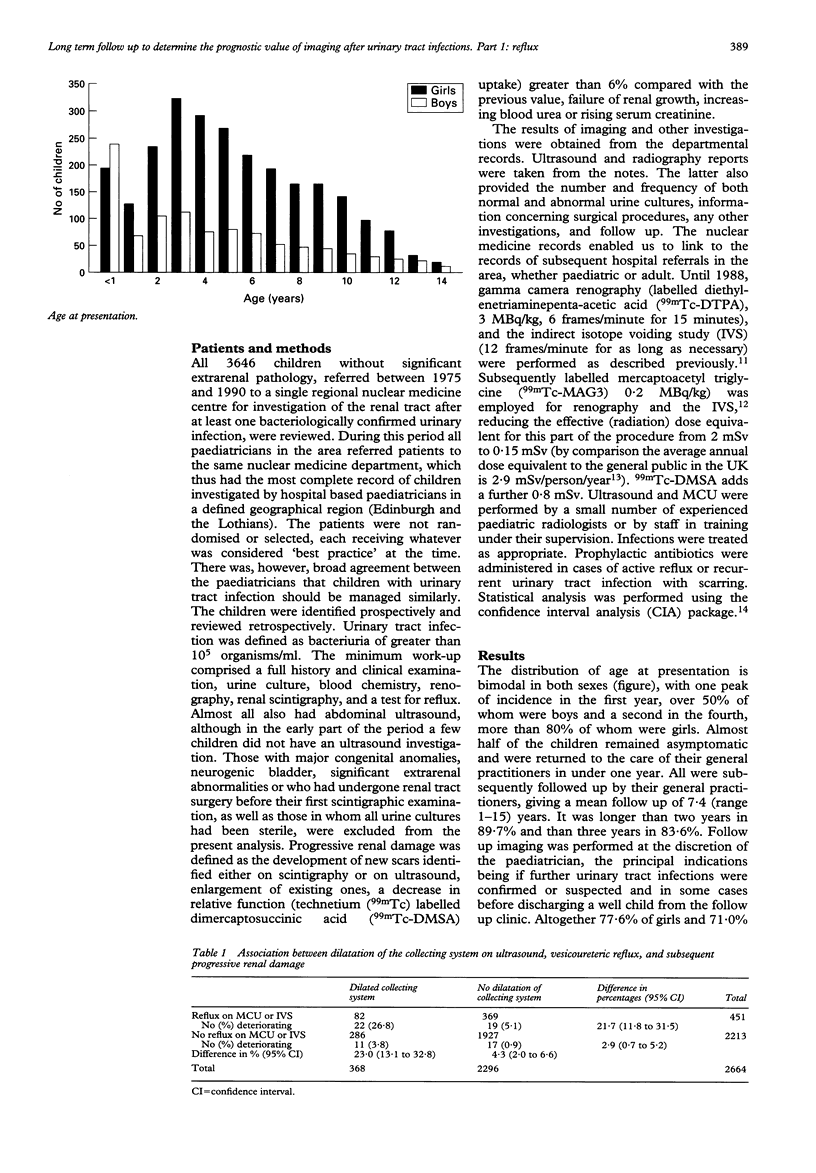
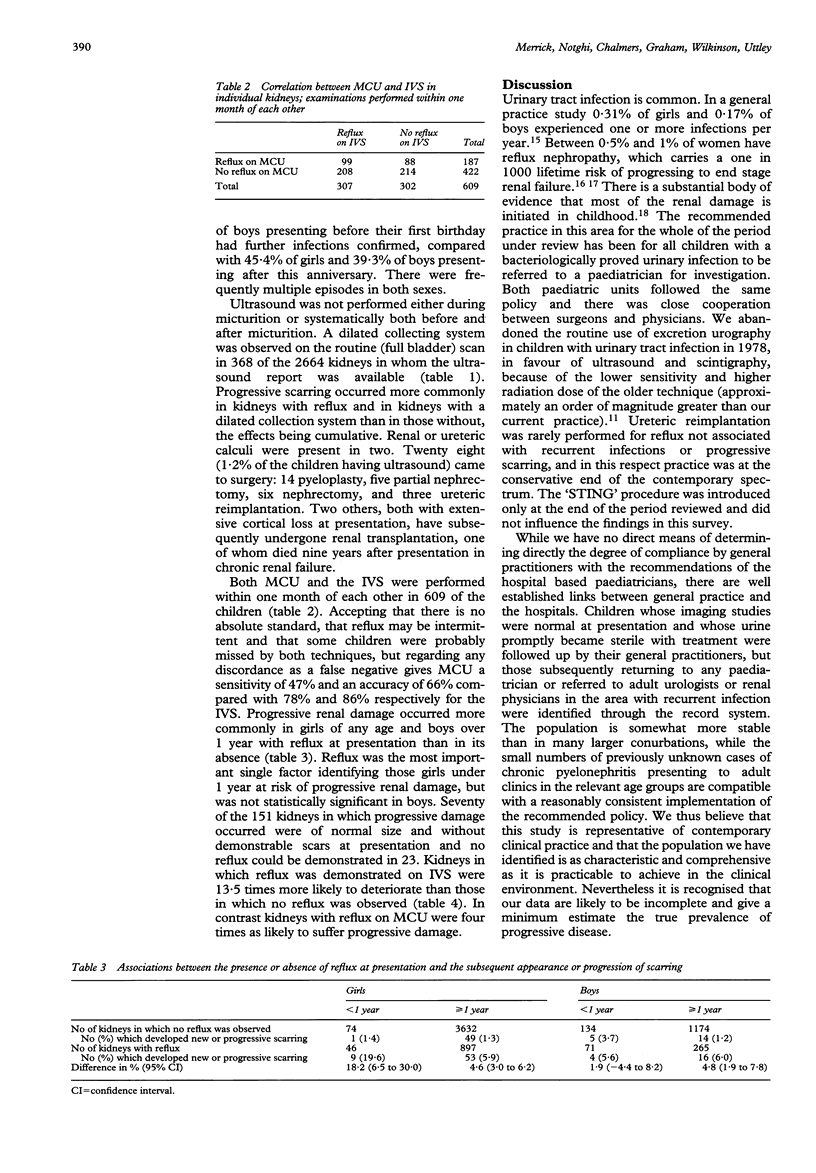
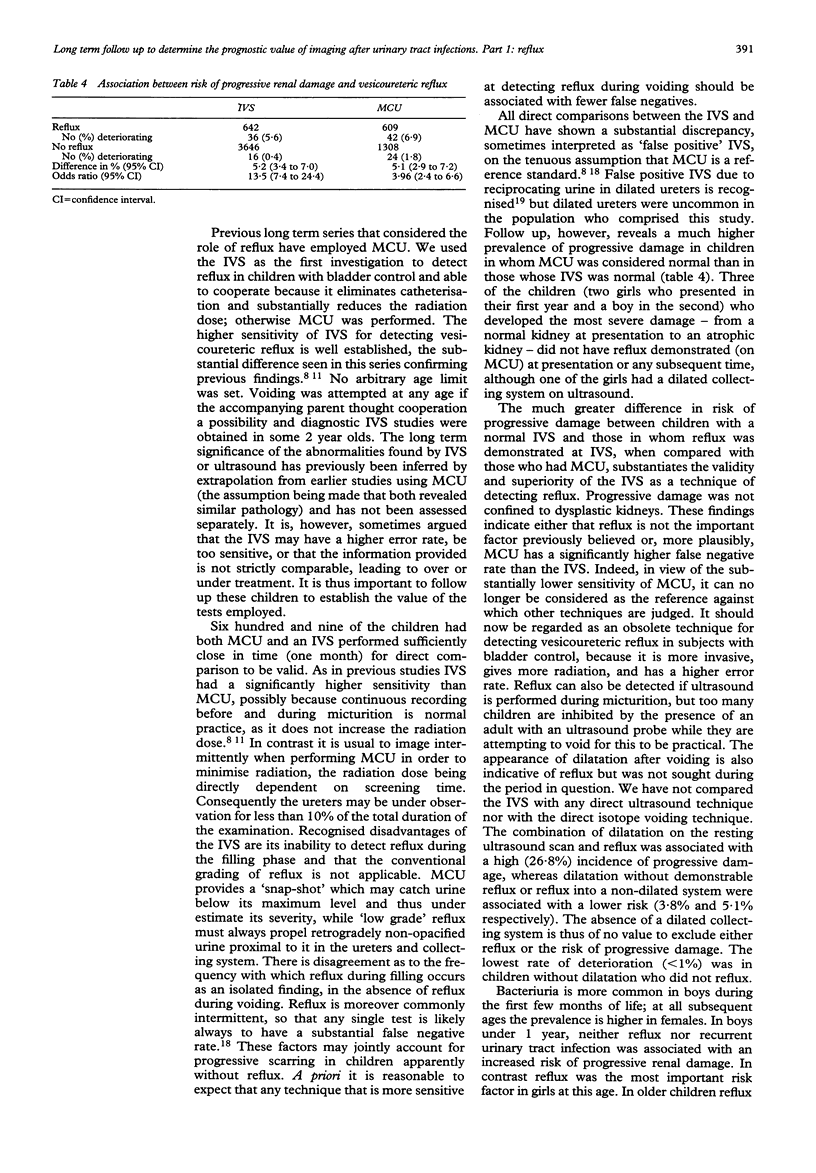
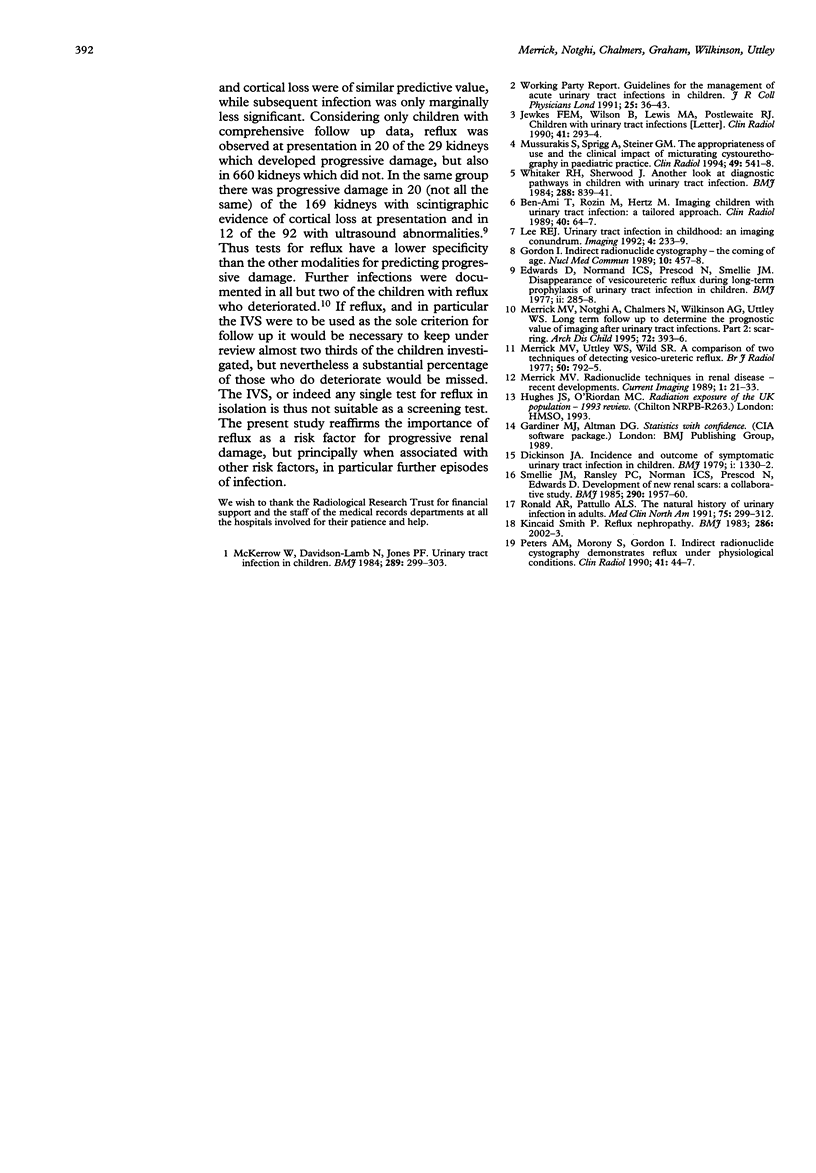
Selected References
These references are in PubMed. This may not be the complete list of references from this article.
- Ben-Ami T., Rozin M., Hertz M. Imaging of children with urinary tract infection: a tailored approach. Clin Radiol. 1989 Jan;40(1):64–67. doi: 10.1016/s0009-9260(89)80031-5. [DOI] [PubMed] [Google Scholar]
- Dickinson J. A. Incidence and outcome of symptomatic urinary tract infection in children. Br Med J. 1979 May 19;1(6174):1330–1332. doi: 10.1136/bmj.1.6174.1330. [DOI] [PMC free article] [PubMed] [Google Scholar]
- Edwards D., Normand I. C., Prescod N., Smellie J. M. Disappearance of vesicoureteric reflux during long-term prophylaxis of urinary tract infection in children. Br Med J. 1977 Jul 30;2(6082):285–288. doi: 10.1136/bmj.2.6082.285. [DOI] [PMC free article] [PubMed] [Google Scholar]
- Gordon I. Indirect radionuclide cystography--the coming of age. Nucl Med Commun. 1989 Jul;10(7):457–458. doi: 10.1097/00006231-198907000-00001. [DOI] [PubMed] [Google Scholar]
- Jewkes F. E., Wilson B., Lewis M. A., Postlethwaite R. J. Children with urinary tract infection. Clin Radiol. 1990 Oct;42(4):293–294. doi: 10.1016/s0009-9260(05)82130-0. [DOI] [PubMed] [Google Scholar]
- Kincaid-Smith P. Reflux nephropathy. Br Med J (Clin Res Ed) 1983 Jun 25;286(6383):2002–2003. doi: 10.1136/bmj.286.6383.2002. [DOI] [PMC free article] [PubMed] [Google Scholar]
- McKerrow W., Davidson-Lamb N., Jones P. F. Urinary tract infection in children. Br Med J (Clin Res Ed) 1984 Aug 4;289(6440):299–303. doi: 10.1136/bmj.289.6440.299. [DOI] [PMC free article] [PubMed] [Google Scholar]
- Merrick M. V., Notghi A., Chalmers N., Wilkinson A. G., Uttley W. S. Long-term follow up to determine the prognostic value of imaging after urinary tract infections. Part 2: Scarring. Arch Dis Child. 1995 May;72(5):393–396. doi: 10.1136/adc.72.5.393. [DOI] [PMC free article] [PubMed] [Google Scholar]
- Mussurakis S., Sprigg A., Steiner G. M. The appropriateness of use and the clinical impact of micturating cystourethrography in paediatric practice. Clin Radiol. 1994 Aug;49(8):541–545. doi: 10.1016/s0009-9260(05)82933-2. [DOI] [PubMed] [Google Scholar]
- Peters A. M., Morony S., Gordon I. Indirect radionuclide cystography demonstrates reflux under physiological conditions. Clin Radiol. 1990 Jan;41(1):44–47. doi: 10.1016/s0009-9260(05)80932-8. [DOI] [PubMed] [Google Scholar]
- Ronald A. R., Pattullo A. L. The natural history of urinary infection in adults. Med Clin North Am. 1991 Mar;75(2):299–312. doi: 10.1016/s0025-7125(16)30455-2. [DOI] [PubMed] [Google Scholar]
- Smellie J. M., Ransley P. G., Normand I. C., Prescod N., Edwards D. Development of new renal scars: a collaborative study. Br Med J (Clin Res Ed) 1985 Jun 29;290(6486):1957–1960. doi: 10.1136/bmj.290.6486.1957. [DOI] [PMC free article] [PubMed] [Google Scholar]
- Whitaker R. H., Sherwood T. Another look at diagnostic pathways in children with urinary tract infection. Br Med J (Clin Res Ed) 1984 Mar 17;288(6420):839–841. doi: 10.1136/bmj.288.6420.839. [DOI] [PMC free article] [PubMed] [Google Scholar]


